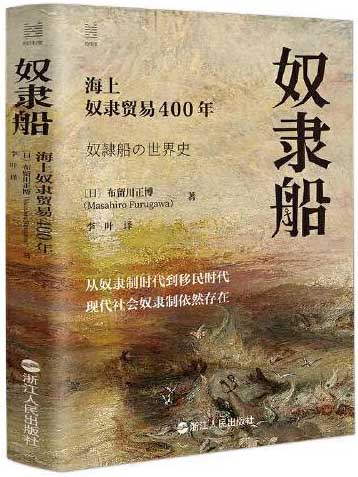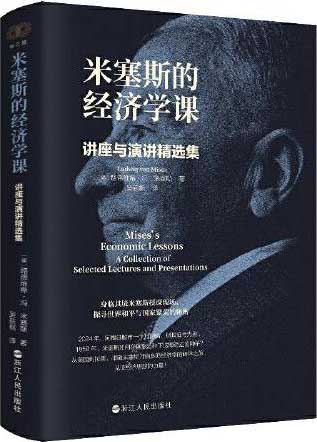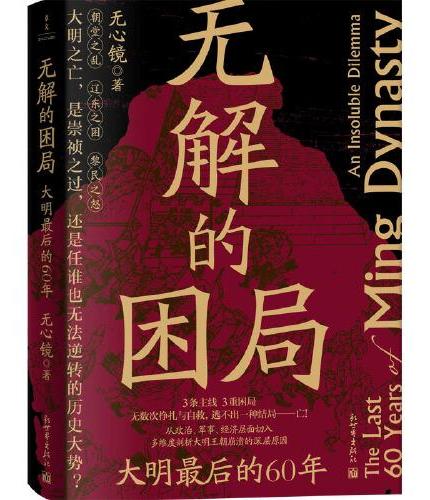新書推薦:

《
叙事话语·新叙事话语
》
售價:HK$
74.8

《
奴隶船:海上奴隶贸易400年
》
售價:HK$
75.9

《
纸上博物馆·美索不达米亚:文明的诞生(破译古老文明的密码,法国伽利玛原版引进,150+资料图片)
》
售價:HK$
85.8

《
米塞斯的经济学课:讲座与演讲精选集
》
售價:HK$
74.8

《
人工智能大模型导论 科大讯飞校企合编教材
》
售價:HK$
75.9

《
做财富的朋友:巴菲特慢慢变富的投资智慧
》
售價:HK$
82.5

《
一群数学家分蛋糕:提升逻辑力的100道谜题
》
售價:HK$
60.5

《
无解的困局:大明最后的60年
》
售價:HK$
66.0
|
| 編輯推薦: |
|
粒子物理依然是人类探索微观世界的前沿,某种意义上说也是整个现代物理学的基础。《现代粒子物理学导论(第三版)英文影印版》是一本内容非常丰富的专著,对于粒子物理的研究者来说是难得的参考书。对于初学者也是很好的教材。
|
| 內容簡介: |
《现代粒子物理学导论(第三版)英文影印版》涵盖了粒子物理各种方向,包括量子电动力学、夸克模型、标准模型等等。在理论和实验两方面都进行了系统讲解。此外,本书还着重讨论了天体物理、宇宙学和粒子物理学的交叉研究,即天体粒子物理学。
《现代粒子物理学导论(第三版)英文影印版》适合粒子物理、核物理、天体物理等领域的研究者和研究生阅读。
|
| 關於作者: |
|
巴基斯坦法耶兹丁,巴基斯坦国家物理中心教授。
|
| 目錄:
|
Preface vii
1. Introduction 1
1.1 Fundamental Forces . . . . . . . . . . . . . . . . . . . . . 1
1.1.1 The Gravitational Force . . . . . . . . . . . . . . 2
1.1.2 The Weak Nuclear Force . . . . . . . . . . . . . . 2
1.1.3 The Electromagnetic Force . . . . . . . . . . . . . 3
1.1.4 The Strong Nuclear Force . . . . . . . . . . . . . . 4
1.2 Relative Strength of Four Fundamental Forces . . . . . . 4
1.3 Range of the Three Basic Forces . . . . . . . . . . . . . . 5
1.4 Classi_cation of Matter . . . . . . . . . . . . . . . . . . . 7
1.5 Strong Color Charges . . . . . . . . . . . . . . . . . . . . 9
1.6 Fundamental Role of \Charges" in the Uni_cation of Forces 10
1.7 Strong Quark-Quark Force . . . . . . . . . . . . . . . . . 16
1.8 Grand Uni_cation . . . . . . . . . . . . . . . . . . . . . . 18
1.9 Units and Notation . . . . . . . . . . . . . . . . . . . . . . 19
1.10 Problems . . . . . . . . . . . . . . . . . . . . . . . . . . . 21
1.11 References . . . . . . . . . . . . . . . . . . . . . . . . . . . 21
2. Scattering and Particle Interaction 23
2.1 Introduction . . . . . . . . . . . . . . . . . . . . . . . . . . 23
2.2 Kinematics of a Scattering Process . . . . . . . . . . . . . 26
2.3 Interaction Picture . . . . . . . . . . . . . . . . . . . . . . 31
2.4 Scattering Matrix S-Matrix . . . . . . . . . . . . . . . . 32
2.5 Phase Space . . . . . . . . . . . . . . . . . . . . . . . . . . 36
2.6 Examples . . . . . . . . . . . . . . . . . . . . . . . . . . . 39
2.6.1 Two-body Scattering . . . . . . . . . . . . . . . . 39
2.6.2 Three-body Decay . . . . . . . . . . . . . . . . . . 41
2.7 Electromagnetic Interaction . . . . . . . . . . . . . . . . . 50
2.8 Weak Interaction . . . . . . . . . . . . . . . . . . . . . . . 52
2.9 Hadronic Cross-section . . . . . . . . . . . . . . . . . . . . 55
2.10 Problems . . . . . . . . . . . . . . . . . . . . . . . . . . . 56
2.11 References . . . . . . . . . . . . . . . . . . . . . . . . . . . 58
3. Space-Time Symmetries 59
3.1 Introduction . . . . . . . . . . . . . . . . . . . . . . . . . . 59
3.1.1 Rotation and SO3 Group . . . . . . . . . . . . . 60
3.1.2 Translation . . . . . . . . . . . . . . . . . . . . . . 62
3.1.3 Lorentz Group . . . . . . . . . . . . . . . . . . . . 63
3.2 Invariance Principle . . . . . . . . . . . . . . . . . . . . . 65
3.2.1 U Continuous . . . . . . . . . . . . . . . . . . . . 65
3.2.2 U is Discrete e.g. Space Reection . . . . . . . . 66
3.3 Parity . . . . . . . . . . . . . . . . . . . . . . . . . . . . . 66
3.4 Intrinsic Parity . . . . . . . . . . . . . . . . . . . . . . . . 68
3.4.1 Intrinsic Parity of Pion . . . . . . . . . . . . . . . 70
3.5 Parity Constraints on S-Matrix for Hadronic Reactions . . 71
3.5.1 Scattering of Spin 0 Particles on Spin 12 Particles 71
3.5.2 Decay of a Spin 0+ Particle into Three SpinlessParticles Each Having Odd Parity . . . . . . . . . 72
3.6 Time Reversal . . . . . . . . . . . . . . . . . . . . . . . . 73
3.6.1 Unitarity . . . . . . . . . . . . . . . . . . . . . . . 74
3.6.2 Reciprocity Relation . . . . . . . . . . . . . . . . . 75
3.7 Applications . . . . . . . . . . . . . . . . . . . . . . . . . . 76
3.7.1 Detailed Balance Principle . . . . . . . . . . . . . 76
3.8 Unitarity Constraints . . . . . . . . . . . . . . . . . . . . 77
3.8.1 Two-Particle Partial Wave Unitarity . . . . . . . . 79
3.9 Problems . . . . . . . . . . . . . . . . . . . . . . . . . . . 85
3.10 References . . . . . . . . . . . . . . . . . . . . . . . . . . . 90
4. Internal Symmetries 91
4.1 Selection Rules and Globally Conserved Quantum Numbers 91
4.2 Isospin . . . . . . . . . . . . . . . . . . . . . . . . . . . . . 97
4.2.1 Electromagnetic Interaction and Isospin . . . . . . 100
4.2.2 Weak Interaction and Isospin . . . . . . . . . . . . 101
4.3 Resonance Production . . . . . . . . . . . . . . . . . . . . 101
4.3.1 _-resonance . . . . . . . . . . . . . . . . . . . . . 103
4.3.2 Spin of _ . . . . . . . . . . . . . . . . . . . . . . . 103
4.4 Charge Conjugation . . . . . . . . . . . . . . . . . . . . . 107
4.5 G-Parity . . . . . . . . . . . . . . . . . . . . . . . . . . . . 112
4.6 Problems . . . . . . . . . . . . . . . . . . . . . . . . . . . 113
4.7 References . . . . . . . . . . . . . . . . . . . . . . . . . . . 117
5. Unitary Groups and SU3 119
5.1 Unitary Groups and SU3 . . . . . . . . . . . . . . . . . 119
5.2 Particle Representations in Flavor SU3 . . . . . . . . . . 124
5.2.1 Mesons . . . . . . . . . . . . . . . . . . . . . . . . 126
5.2.2 Baryons . . . . . . . . . . . . . . . . . . . . . . . . 128
5.3 U-Spin . . . . . . . . . . . . . . . . . . . . . . . . . . . . . 132
5.4 Irreducible Representations of SU3 . . . . . . . . . . . . 134
5.4.1 Young''s Tableaux . . . . . . . . . . . . . . . . . . 135
5.5 SUN . . . . . . . . . . . . . . . . . . . . . . . . . . . . . 141
5.6 Applications of Flavor SU3 . . . . . . . . . . . . . . . . 145
5.6.1 SU3 Invariant BBP Couplings . . . . . . . . . . 145
5.6.2 VPP Coupling . . . . . . . . . . . . . . . . . . . . 146
5.7 Mass Splitting in Flavor SU3 . . . . . . . . . . . . . . . 148
5.8 Problems . . . . . . . . . . . . . . . . . . . . . . . . . . . 154
5.9 References . . . . . . . . . . . . . . . . . . . . . . . . . . . 158
6. SU6 and Quark Model 159
6.1 SU6 . . . . . . . . . . . . . . . . . . . . . . . . . . . . . 159
6.1.1 SU6 Wave Function for Mesons . . . . . . . . . 160
6.2 Magnetic Moments of Baryons . . . . . . . . . . . . . . . 164
6.3 Radiative Decays of Vector Mesons . . . . . . . . . . . . . 170
6.4 Radiative Decays Complementary Derivation . . . . . . 176
6.4.1 Mesonic Radiative Decays V = P + . . . . . . . 176
6.4.2 Baryonic Radiative Decay . . . . . . . . . . . . . 177
6.5 Problems . . . . . . . . . . . . . . . . . . . . . . . . . . . 179
6.6 References . . . . . . . . . . . . . . . . . . . . . . . . . . . 180
7. Color, Gauge Principle and Quantum Chromodynamics 181
7.1 Evidence for Color . . . . . . . . . . . . . . . . . . . . . . 181
7.2 Gauge Principle . . . . . . . . . . . . . . . . . . . . . . . . 184
7.2.1 Aharanov and Bohm Experiment . . . . . . . . . 186
7.2.2 Gauge Principle for Relativistic Quantum Mechanics 188
7.3 Non-Abelion Local Gauge Transformations Yang-Mills . 190
7.4 Quantum Chromodynamics QCD . . . . . . . . . . . . . 194
7.4.1 Conserved Current . . . . . . . . . . . . . . . . . 197
7.4.2 Experimental Determinations of _sq2 andAsymptotic Freedom of QCD . . . . . . . . . . . . 199
7.5 Hadron Spectroscopy . . . . . . . . . . . . . . . . . . . . . 202
7.5.1 One Gluon Exchange Potential . . . . . . . . . . . 202
7.5.2 Long Range QCD Motivated Potential . . . . . . 205
7.5.3 Spin-Spin Interaction . . . . . . . . . . . . . . . . 209
7.6 The Mass Spectrum . . . . . . . . . . . . . . . . . . . . . 209
7.6.1 Meson Mass Relations . . . . . . . . . . . . . . . . 211
7.6.2 Baryon Mass Spectrum . . . . . . . . . . . . . . . 213
7.7 Problems . . . . . . . . . . . . . . . . . . . . . . . . . . . 217
7.8 References . . . . . . . . . . . . . . . . . . . . . . . . . . . 219
8. Heavy Flavors 221
8.1 Discovery of Charm . . . . . . . . . . . . . . . . . . . . . 221
8.1.1 Isospin . . . . . . . . . . . . . . . . . . . . . . . . 223
8.1.2 SU3 Classi_cation . . . . . . . . . . . . . . . . . 223
8.2 Charm . . . . . . . . . . . . . . . . . . . . . . . . . . . . . 224
8.2.1 Heavy Mesons . . . . . . . . . . . . . . . . . . . . 224
8.2.2 The Fifth Quark Flavor: Bottom Mesons . . . . . 228
8.2.3 The Sixth Quark Flavor: The Top . . . . . . . . . 228
8.3 Strong and Radiative Decays of D_ Mesons . . . . . . . . 229
8.4 Heavy Baryons . . . . . . . . . . . . . . . . . . . . . . . . 232
8.5 Quarkonium . . . . . . . . . . . . . . . . . . . . . . . . . . 233
8.6 Leptonic Decay Width of Quarkonium . . . . . . . . . . . 237
8.7 Hadronic Decay Width . . . . . . . . . . . . . . . . . . . . 238
8.8 Non-Relativistic Treatment of Quarkonium . . . . . . . . 240
8.9 Observations . . . . . . . . . . . . . . . . . . . . . . . . . 245
8.10 Tetraquark . . . . . . . . . . . . . . . . . . . . . . . . . . 246
8.11 Problems . . . . . . . . . . . . . . . . . . . . . . . . . . . 249
8.12 References . . . . . . . . . . . . . . . . . . . . . . . . . . . 254
9. Heavy Quark E_ective Theory 255
9.1 E_ective Lagrangian . . . . . . . . . . . . . . . . . . . . . 255
9.2 Spin Symmetry of Heavy Quark . . . . . . . . . . . . . . . 259
9.3 Mass Spectroscopy for Hadrons with One Heavy Quark . 264
9.4 The P-wave Heavy Mesons: Mass Spectroscopy . . . . . . 269
9.5 Decays of P-wave Mesons . . . . . . . . . . . . . . . . . . 275
9.6 Problems . . . . . . . . . . . . . . . . . . . . . . . . . . . 277
9.7 References . . . . . . . . . . . . . . . . . . . . . . . . . . . 277
10. Weak Interaction 279
10.1 V ?? A Interaction . . . . . . . . . . . . . . . . . . . . . . 279
10.1.1 Helicity of the Neutrino . . . . . . . . . . . . . . . 281
10.2 Classi_cation of Weak Processes . . . . . . . . . . . . . . 281
10.2.1 Purely Leptonic Processes . . . . . . . . . . . . . 281
10.2.2 Semileptonic Processes . . . . . . . . . . . . . . . 283
10.2.3 Non-Leptonic Processes . . . . . . . . . . . . . . . 287
10.2.4 _-Decay . . . . . . . . . . . . . . . . . . . . . . . 288
10.2.5 Remarks . . . . . . . . . . . . . . . . . . . . . . . 289
10.2.6 Semi-Leptonic Processes . . . . . . . . . . . . . . 291
10.3 Baryon Decays . . . . . . . . . . . . . . . . . . . . . . . . 292
10.4 Pseudoscalar Meson Decays . . . . . . . . . . . . . . . . . 296
10.4.1 Pion Decay . . . . . . . . . . . . . . . . . . . . . . 296
10.4.2 Strangeness Changing Semi-Leptonic Decays . . . 297
10.5 Hadronic Weak Decays . . . . . . . . . . . . . . . . . . . . 299
10.5.1 Non-Leptonic Decays of Hyperons . . . . . . . . . 299
10.5.2 _I = 12 Rule for Hyperon Decays . . . . . . . . 302
10.5.3 Non-leptonic Hyperon Decays in Non-RelativisticQuark Model . . . . . . . . . . . . . . . . . . . . . 304
10.6 Problems . . . . . . . . . . . . . . . . . . . . . . . . . . . 307
10.7 References . . . . . . . . . . . . . . . . . . . . . . . . . . . 310
11. Properties of Weak Hadronic Currents and Chiral Symmetry 311
11.1 Introduction . . . . . . . . . . . . . . . . . . . . . . . . . . 311
11.2 Conserved Vector Current Hypothesis CVC . . . . . . . 311
11.3 Partially Conserved Axial Vector Current HypothesisPCAC . . . . . . . . . . . . . . . . . . . . . . . . . . . . 314
11.4 Current Algebra and Chiral Symmetry . . . . . . . . . . . 317
11.4.1 Explicit Breaking of Chiral Symmetry . . . . . . . 320
11.4.2 An Application of Chiral Symmetry to Non-Leptonic Decays of Hyperons . . . . . . . . . . . . 323
11.5 Axial Anomaly . . . . . . . . . . . . . . . . . . . . . . . . 325
11.6 QCD Sum Rules . . . . . . . . . . . . . . . . . . . . . . . 327
11.7 Problems . . . . . . . . . . . . . . . . . . . . . . . . . . . 328
11.8 References . . . . . . . . . . . . . . . . . . . . . . . . . . . 329
12. Neutrino 331
12.1 Introduction . . . . . . . . . . . . . . . . . . . . . . . . . . 331
12.2 Intrinsic Properties of Neutrinos . . . . . . . . . . . . . . 332
12.3 Mass . . . . . . . . . . . . . . . . . . . . . . . . . . . . . . 332
12.3.1 Constraints on Neutrino Mass . . . . . . . . . . . 333
12.3.2 Dirac and Majorana Masses . . . . . . . . . . . . 337
12.3.3 Fermion Masses in the Standard Model SM andSee-saw Mechanism . . . . . . . . . . . . . . . . . 339
12.4 Neutrino Oscillations . . . . . . . . . . . . . . . . . . . . . 343
12.4.1 Mikheyev-Smirnov-Wolfenstein E_ect . . . . . . . 345
12.4.2 Evolution of Flavor Eigenstates in Matter . . . . . 349
12.5 Evidence for Neutrino Oscillations . . . . . . . . . . . . . 351
12.5.1 Disappearance Experiments . . . . . . . . . . . . 351
12.5.2 Appearance Experiments . . . . . . . . . . . . . . 351
12.6 Neutrino Mass Models and Mixing Matrix and Symmetries 355
12.7 Neutrino Magnetic Moment . . . . . . . . . . . . . . . . . 360
12.8 Problems . . . . . . . . . . . . . . . . . . . . . . . . . . . 362
12.9 References . . . . . . . . . . . . . . . . . . . . . . . . . . . 363
13. Electroweak Uni_cation 365
13.1 Introduction . . . . . . . . . . . . . . . . . . . . . . . . . . 365
13.2 Spontaneous Symmetry Breaking and Higgs Mechanism . 366
13.2.1 Higgs Mechanism . . . . . . . . . . . . . . . . . . 368
13.2.2 Gauge Symmetry Breaking for Chiral U1U2 Group 369
13.3 Renormalizability . . . . . . . . . . . . . . . . . . . . . . . 372
13.4 Electroweak Uni_cation . . . . . . . . . . . . . . . . . . . 374
13.4.1 Experimental Consequences of the ElectroweakUni_cation . . . . . . . . . . . . . . . . . . . . . . 381
13.4.2 Need for Radiative Corrections . . . . . . . . . . . 382
13.4.3 Experiments which Determine sin2 _W . . . . . . 387
13.5 Decay Widths of W and Z Bosons . . . . . . . . . . . . . 389
13.6 Tests of Yang-Mills Character of Gauge Bosons . . . . . . 395
13.7 Higgs Boson Mass . . . . . . . . . . . . . . . . . . . . . . 399
13.8 Upper Bound . . . . . . . . . . . . . . . . . . . . . . . . . 399
13.8.1 Unitarity . . . . . . . . . . . . . . . . . . . . . . . 399
13.8.2 Finiteness of Couplings . . . . . . . . . . . . . . . 400
13.9 Standard Model, Higgs Boson Searches, Production at Decays
13.9.1 LEP-2 . . . . . . . . . . . . . . . . . . . . . . . . 401
13.9.2 LHC and Tevatron . . . . . . . . . . . . . . . . . 402
13.10 Two Higgs Doublet Model 2HDM . . . . . . . . . . . . . 406
13.11 GIM Mechanism . . . . . . . . . . . . . . . . . . . . . . . 411
13.12 Cabibbo-Kobayashi-Maskawa Matrix . . . . . . . . . . . . 414
13.13 Axial Anomaly . . . . . . . . . . . . . . . . . . . . . . . . 416
13.14 Problems . . . . . . . . . . . . . . . . . . . . . . . . . . . 421
13.15 References . . . . . . . . . . . . . . . . . . . . . . . . . . . 423
14. Deep Inelastic Scattering 425
14.1 Introduction . . . . . . . . . . . . . . . . . . . . . . . . . . 425
14.2 Deep-Inelastic Lepton-Nucleon Scattering . . . . . . . . . 427
14.3 Parton Model . . . . . . . . . . . . . . . . . . . . . . . . . 431
14.4 Deep Inelastic Neutrino-Nucleon Scattering . . . . . . . . 436
14.5 Sum Rules . . . . . . . . . . . . . . . . . . . . . . . . . . . 439
14.6 Deep-Inelastic Scattering Involving Neutral Weak Currents 446
14.7 Problems . . . . . . . . . . . . . . . . . . . . . . . . . . . 447
14.8 References . . . . . . . . . . . . . . . . . . . . . . . . . . . 450
15. Weak Decays of Heavy Flavors 451
15.1 Leptonic Decays of _ Lepton . . . . . . . . . . . . . . . . 451
15.2 Semi-Hadronic Decays of _ Lepton . . . . . . . . . . . . . 453
15.2.1 Special Cases . . . . . . . . . . . . . . . . . . . . . 454
15.3 Weak Decays of Heavy Flavors . . . . . . . . . . . . . . . 457
15.3.1 Leptonic Decays of D and B Mesons . . . . . . . 458
15.3.2 Semileptonic Decays of D and B Mesons . . . . . 459
15.3.3 Exclusive Semileptonic Decays of D and B Mesons 464
15.3.4 Weak Hadronic Decays of B Mesons . . . . . . . . 471
15.3.5 Inclusive Hadronic B Decays . . . . . . . . . . . . 476
15.3.6 Radiative Decays of Bq Mesons . . . . . . . . . . 478
15.4 Inclusive Hadronic Decays of D-Mesons . . . . . . . . . . 479
15.4.1 Scattering and Annihilation Diagrams . . . . . . . 480
15.5 Problems . . . . . . . . . . . . . . . . . . . . . . . . . . . 484
15.6 References . . . . . . . . . . . . . . . . . . . . . . . . . . . 487
16. Particle Mixing and CP-Violation 489
16.1 Introduction . . . . . . . . . . . . . . . . . . . . . . . . . . 489
16.2 CPT and CP Invariance . . . . . . . . . . . . . . . . . . . 492
16.3 CP-Violation in the Standard Model . . . . . . . . . . . . 494
16.4 Particle Mixing . . . . . . . . . . . . . . . . . . . . . . . . 497
16.5 K0 ?? _K0 Complex and CP-Violation in K-Decay . . . . . 504
16.6 B0 ?? _B0 Complex . . . . . . . . . . . . . . . . . . . . . . 511
16.7 CP-Violation in B-Decays . . . . . . . . . . . . . . . . . . 515
16.8 CP-Violation in Hadronic Weak Decays of Baryons . . . . 518
16.9 Problems . . . . . . . . . . . . . . . . . . . . . . . . . . . 522
16.10 References . . . . . . . . . . . . . . . . . . . . . . . . . . . 523
17. Grand Uni_cation, Supersymmetry and Strings 525
17.1 Grand Uni_cation . . . . . . . . . . . . . . . . . . . . . . 525
17.1.1 q2 Evolution of Gauge Coupling Constants and theGrand Uni_cation Mass Scale . . . . . . . . . . . 529
17.1.2 General Consequences of GUTS . . . . . . . . . . 531
17.2 Poincar_e Group and Supersymmetry . . . . . . . . . . . . 534
17.2.1 Introduction . . . . . . . . . . . . . . . . . . . . . 534
17.2.2 Poincar_e group . . . . . . . . . . . . . . . . . . . 537
17.2.3 Two-Component Weyl Spinors . . . . . . . . . . . 539
17.2.4 Spinor Algebra, Supersymmetry . . . . . . . . . . 540
17.2.5 Supersymmetric Multiplets . . . . . . . . . . . . . 542
17.3 Supersymmetry and Strings . . . . . . . . . . . . . . . . . 544
17.3.1 Introduction . . . . . . . . . . . . . . . . . . . . . 544
17.3.2 Supersymmetry . . . . . . . . . . . . . . . . . . . 545
17.4 String Theory and Duality . . . . . . . . . . . . . . . . . . 548
17.4.1 M-theory . . . . . . . . . . . . . . . . . . . . . . . 550
17.5 Some Important Results . . . . . . . . . . . . . . . . . . . 552
17.6 Conclusions . . . . . . . . . . . . . . . . . . . . . . . . . . 552
17.7 Problems . . . . . . . . . . . . . . . . . . . . . . . . . . . 552
17.8 References . . . . . . . . . . . . . . . . . . . . . . . . . . . 554
18. Cosmology and Astroparticle Physics 557
18.1 Cosmological Principle and Expansion of the Universe . . 557
18.2 The Standard Model of Cosmology . . . . . . . . . . . . . 559
18.3 Cosmological Parameters and the Standard Model Solutions 562
18.4 Accelerating Universe and Dark Energy . . . . . . . . . . 566
18.4.1 Evidence from Supernovae . . . . . . . . . . . . . 567
18.4.2 Evidence from CMB Data . . . . . . . . . . . . . 568
18.4.3 Quintessence . . . . . . . . . . . . . . . . . . . . . 571
18.4.4 Modi_ed Gravity . . . . . . . . . . . . . . . . . . 573
18.5 Hot Big Bang: Thermal History of the Universe . . . . . . 574
18.5.1 Thermal Equilibrium . . . . . . . . . . . . . . . . 574
18.5.2 The Radiation Era . . . . . . . . . . . . . . . . . 576
18.6 Freeze Out . . . . . . . . . . . . . . . . . . . . . . . . . . 581
18.7 Limit on Neutrino Mass . . . . . . . . . . . . . . . . . . . 584
18.8 Primordial Nucleosynthesis . . . . . . . . . . . . . . . . . 585
18.9 Ination . . . . . . . . . . . . . . . . . . . . . . . . . . . . 588
18.9.1 Horizon Problem . . . . . . . . . . . . . . . . . . . 588
18.9.2 Flatness Problem . . . . . . . . . . . . . . . . . . 590
18.9.3 Realization of Ination . . . . . . . . . . . . . . . 591
18.9.4 Slow-roll Ination . . . . . . . . . . . . . . . . . . 593
18.10 Baryogenesis . . . . . . . . . . . . . . . . . . . . . . . . . 595
18.10.1 Sakharov''s Conditions . . . . . . . . . . . . . . . . 597
18.10.2 Various Scenarios for Baryogenesis . . . . . . . . . 598
18.10.3 Leptogenesis . . . . . . . . . . . . . . . . . . . . . 601
18.11 Problems . . . . . . . . . . . . . . . . . . . . . . . . . . . 606
18.12 References . . . . . . . . . . . . . . . . . . . . . . . . . . . 607
Appendix A Quantum Field Theory 609
A.1 Spin 0 Field . . . . . . . . . . . . . . . . . . . . . . . . . . 609
A.2 Spin 12 Particle . . . . . . . . . . . . . . . . . . . . . . . 611
A.2.1 Pauli Representation of Matrices . . . . . . . . 612
A.2.2 Weyl Representation of Matrices . . . . . . . . . 613
A.3 Trace of Matrices . . . . . . . . . . . . . . . . . . . . . . 616
A.4 Spin 1 Field . . . . . . . . . . . . . . . . . . . . . . . . . . 618
A.5 Massive Spin 1 Particle . . . . . . . . . . . . . . . . . . . 619
A.6 Feynman Rules for S-Matrix in Momentum Space . . . . . 620
A.7 Application of Feynman Rules . . . . . . . . . . . . . . . . 621
A.7.1 e+e??!Hadrons . . . . . . . . . . . . . . . . . . 624
A.7.2 ElectronScatteringanStructurelessSpin1=2Target625
A.8 Discrete Symmetries . . . . . . . . . . . . . . . . . . . . . 628
A.8.1 Charge Conjugation . . . . . . . . . . . . . . . . . 628
A.8.2 Space Reection . . . . . . . . . . . . . . . . . . . 631
Electron Scattering and Structureless Spin 1=2 Target 625
A.8.3 Time Reversal . . . . . . . . . . . . . . . . . . . . 632
A.9 Problems . . . . . . . . . . . . . . . . . . . . . . . . . . . 633
AppendixB Renormalization Group and Running Coupling Constant 639
B.1 Feynman Rules for Quantum Chromodynamics . . . . . . 639
B.2 Renormalization Group, Coupling Constant and Asymptotic
Freedom . . . . . . . . . . . . . . . . . . . . . . . . . 640
B.3 Running Coupling Constant in Quantum Electrodynamics
QED . . . . . . . . . . . . . . . . . . . . . . . . . . . . . 645
B.4 Running Coupling Constant for SU2 Gauge Group . . . 646
B.5 Renormalization Group and High Q2 Behavior of Green''s
Function . . . . . . . . . . . . . . . . . . . . . . . . . . . . 647
B.5.1 Gluon Propagator . . . . . . . . . . . . . . . . . . 649
B.5.2 Fermion Propagator . . . . . . . . . . . . . . . . . 650
B.6 References for Appendices . . . . . . . . . . . . . . . . . . 652
Index 653
|
|









